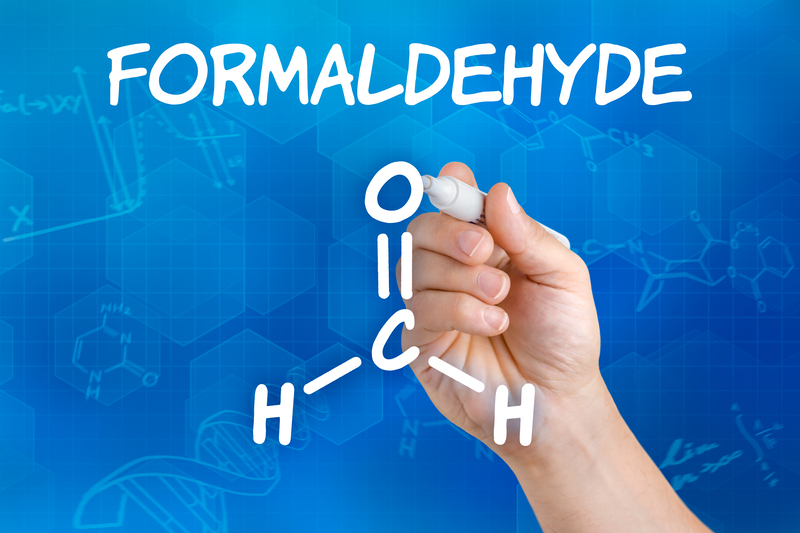Green Cleaning Methods and Practices
Posted on 01/07/2025
Green Cleaning Methods and Practices
In recent years, the concept of green cleaning has gained considerable traction due to increasing awareness about environmental issues and health concerns associated with traditional cleaning products. Green cleaning involves using methods and products that are environmentally friendly and safe for human health. This article delves into various green cleaning methods and practices, offering insights on how to maintain cleanliness without compromising the well-being of people and the planet.
What is Green Cleaning?
Green cleaning refers to the use of cleaning techniques and products that have minimal impact on human health and the environment. This means avoiding chemicals that are toxic, non-biodegradable, or derived from non-renewable resources. Instead, green cleaning solutions usually rely on natural ingredients and sustainable practices. The goal is to achieve a clean and healthy living space while also minimizing environmental footprint.

Why Choose Green Cleaning?
There are numerous benefits to adopting green cleaning methods:
- Healthier Indoor Air Quality: Traditional cleaning products often release volatile organic compounds (VOCs), which can lead to respiratory problems, headaches, and other health issues. Green cleaning products, on the other hand, are free of these harmful chemicals.
- Environmental Benefits: By using biodegradable and eco-friendly products, you reduce water and soil pollution. This also helps in conserving natural resources and reducing the carbon footprint.
- Cost-Effective: Many green cleaning solutions can be made at home using common household items like vinegar, baking soda, and essential oils, which can be more cost-effective in the long run.
- Safer Alternatives: Non-toxic cleaning products are safer to handle and store, posing fewer risks of accidental poisoning or skin irritations.
- Compliance with Regulations: Many areas are implementing stricter environmental regulations, and adopting green cleaning practices can help you stay compliant.
Common Green Cleaning Ingredients
Here are some natural ingredients frequently used in green cleaning:
- Vinegar: A natural disinfectant that can kill bacteria and remove odors. It's effective for cleaning glass, countertops, and floors.
- Baking Soda: Excellent for scrubbing surfaces and neutralizing odors. It's safe to use on kitchen counters, sinks, and ovens.
- Lemon: Known for its antibacterial and antiseptic properties, lemon is great for cleaning cutting boards, microwaves, and more.
- Castile Soap: A biodegradable soap made from olive oil, suitable for cleaning dishes, floors, and even as a body wash.
- Essential Oils: Oils like tea tree, lavender, and eucalyptus not only offer pleasant scents but also have antibacterial properties.
Homemade Green Cleaning Solutions
Creating your own green cleaning solutions at home can be both effective and economical. Here are some easy recipes:
All-Purpose Cleaner
Combine one part vinegar with one part water in a spray bottle. Add a few drops of essential oil for fragrance. This solution can be used to clean countertops, sinks, and other surfaces.
Glass Cleaner
Mix one part vinegar with four parts water and dispense it into a spray bottle. Use this on windows, mirrors, and glass surfaces for a streak-free shine.
Baking Soda Scrub
For a gentle abrasive cleaner, mix baking soda with enough water to form a paste. This is ideal for scrubbing sinks, stovetops, and bathtubs.
Green Cleaning Tools
Implementing green cleaning doesn't stop at the products you use; the tools are equally important. Here are some eco-friendly tools:
- Microfiber Cloths: These can be reused multiple times and are excellent for trapping dirt and dust.
- Reusable Mop Pads: Instead of disposable mop pads, opt for ones that can be washed and reused.
- Bamboo Cleaning Brushes: Bamboo is a sustainable material, making it an excellent choice for cleaning tools.
- HEPA Filters: Vacuum cleaners with HEPA filters can trap allergens and reduce indoor air pollution.
Green Cleaning Practices
Apart from the products and tools used, green cleaning also involves adopting certain best practices:
Reduce, Reuse, Recycle
Minimize waste by using reusable cloths and containers. Opt for products with minimal packaging and recycle whenever possible.
Buy in Bulk
Purchasing cleaning supplies in bulk not only reduces packaging waste but can also be more cost-effective.
Use Cold Water
Whenever possible, use cold water for cleaning tasks. It saves energy compared to heating water.
Implement a Cleaning Schedule
Regular maintenance can reduce the need for harsh cleaning measures. Establish a routine to keep your home consistently clean.
Ventilate
Proper ventilation is crucial when cleaning, even with green products. Open windows and doors to allow fresh air to circulate.

Green Cleaning in Commercial Spaces
Green cleaning isn't limited to homes; it can be effectively implemented in commercial spaces as well:
Green Cleaning Certification
Consider obtaining green cleaning certification for commercial buildings. Certifications like LEED (Leadership in Energy and Environmental Design) can improve air quality and employee health.
Training for Staff
Ensure that cleaning staff are trained in green cleaning methods. This includes using eco-friendly products and equipment, and following best practices.
Choose Sustainable Suppliers
Partner with suppliers who offer environmentally friendly products and have sustainable business practices.
Monitor and Evaluate
Regularly evaluate your green cleaning program to ensure it meets health and sustainability goals. Gather feedback and make improvements as needed.
Conclusion
Green cleaning methods and practices offer a sustainable approach to maintaining a clean and healthy environment. By using natural ingredients, eco-friendly tools, and adopting best practices, you can significantly reduce your environmental impact while promoting better health and well-being. Whether at home or in the workplace, green cleaning is a practical and effective way to achieve cleanliness without compromising the planet.









